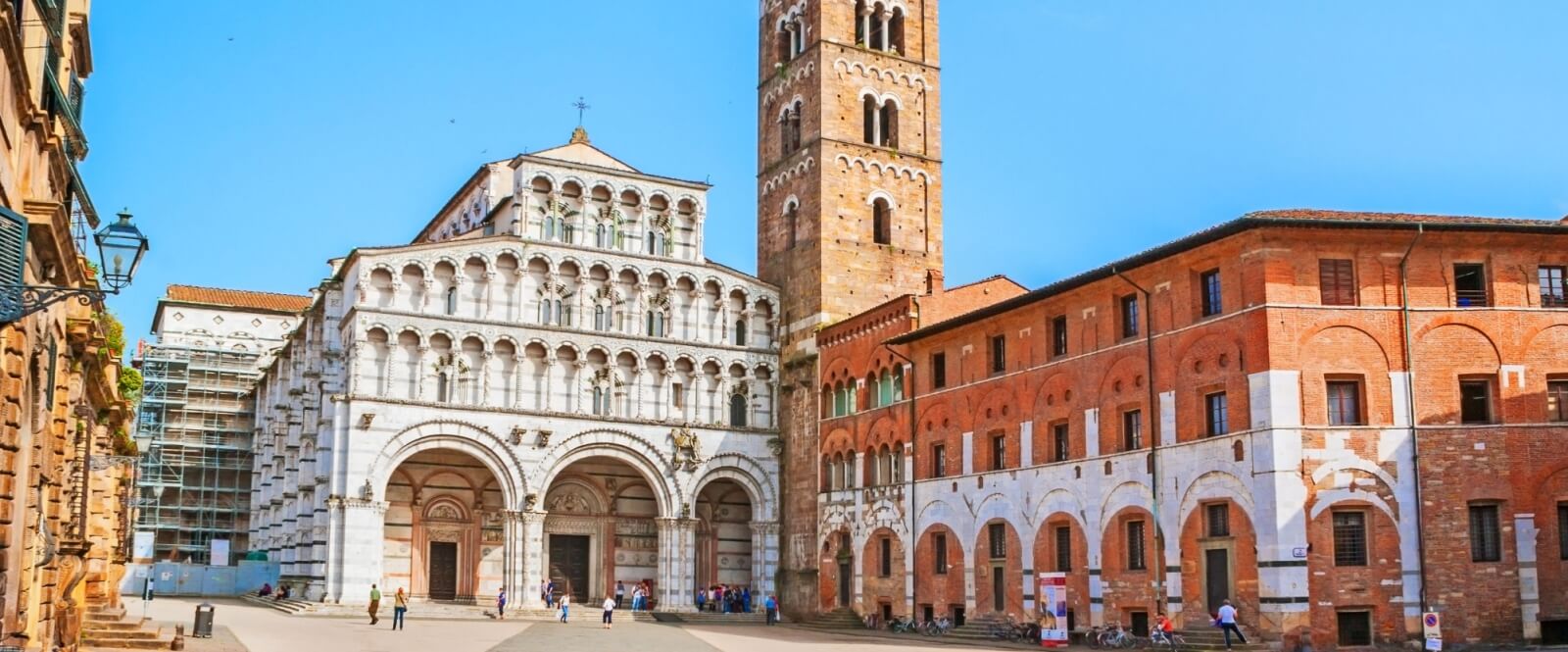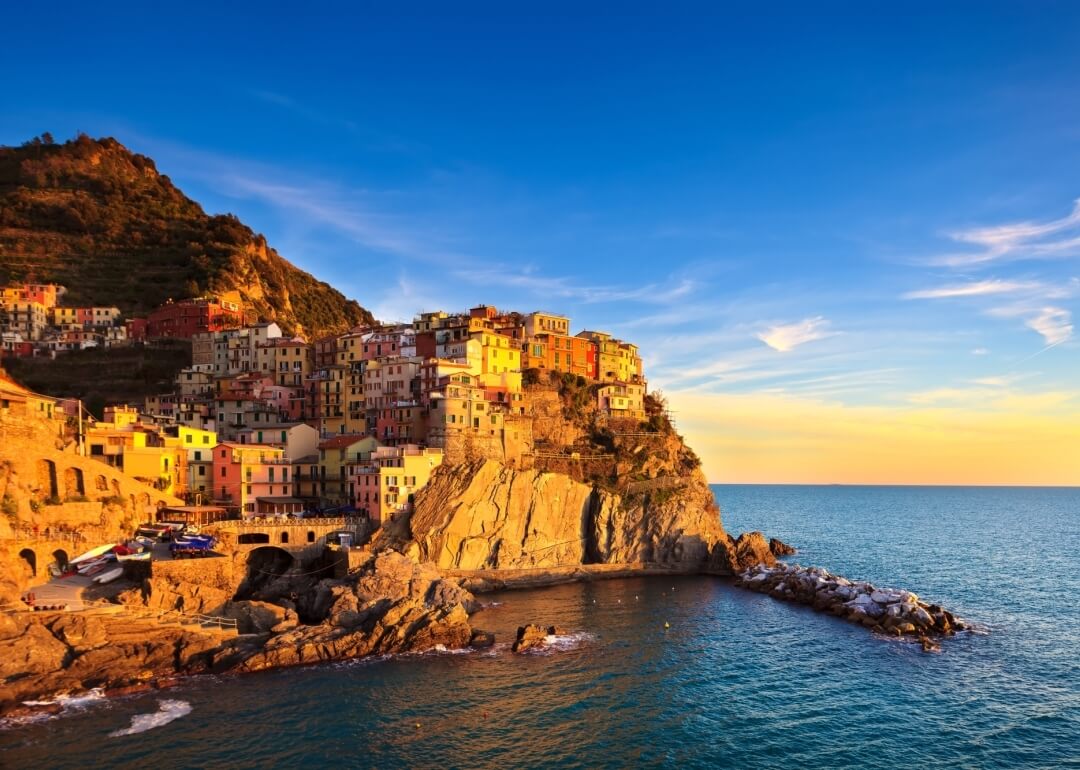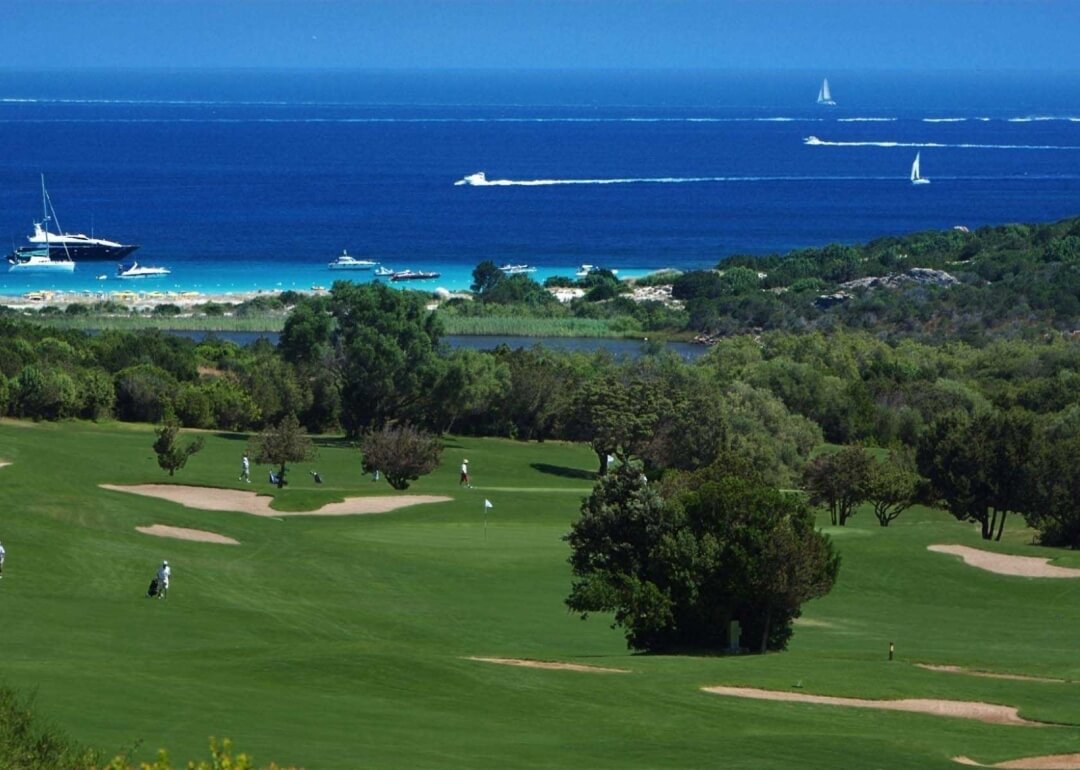Via Bottaccio, 1 – 54038 Montignoso (MS) Toscana
Lucca and Montecarlo
Lucca and Montecarlo
“ Lucca…a compact and admirable little city, the very model of a small pays de Cocagne, overflowing with everything that makes for ease for plenty, for beauty, for interest and good example” (Henry James, “Italian Hours”) .
LUCCA
This quaint and evocative city retains the charm of a small and ancient Italian City State. Over the centuries it has managed to hold on its independence and freedom by adopting an cautious policy.
Having miraculously escaped the devastation of the war, today it boats one of the most extraordinary Tuscan and heritage. The imposing tree-lined Renaissance walls, which totally enclose it, the maze of medieval streets, flange by towers and smart boutiques, the enchanting Romanesque churches and bright inviting squares captivate the visitor who stands in awe of such unexpected beauty.
- Piazza Anfiteatro, built on the ruins of the ancient Roman arena, is still today one of the most picturesque landmarks of the town
- Guinigi Tower, one of its kind has a very suggestive tree lined hanging garden right on the top
- Basilic di San Frediano, Is one of the most ancient churches in Lucca famous for the splendid gilded mosaic on the façade
- The 16th century Walls, built for defence reasons, are today a public garden for the enjoyment of all. You can take a leisurely stroll, ride your bike or even take a ride on a carriage to better appreciate their beauty.
PALACES AND MUSEUMS:
It is possible to change or extend the city tour including a visit to some of the most beautiful “Palazzi” belonging to the merchants of Lucca
- Palazzo Mansi, one of the most important noble palaces in Lucca. Elaborately furnished, is the symbol of wealth archived by the mercantile families of Lucca, Today it is The historical center, now a pedestrian precinct, plunges the visitor back in time and provides the perfect setting to savour the old warm charm, where time and space take on a new dimension, no longer found in today‘s modern cities.
WHAT TO VISIT:
- Piazza S. Michele in Foro, to admire the church bearing the same name
- Piazza Napoleone, from this square we can admire Palazzo Ducale and Teatro del Giglio (the theatre) • Cathedral San Martino, important destination for medieval pilgrims who came here to worship “Il Volto Santo” (The holy Countenance of Christ), is still today an important symbol of the city. Inside the sacristy is the renowned sarcophagus of Ilaria del Carreto by Jacopo della Quercia. A definite must (admission fee)
- Characteristic medieval streets, worthy of mention is “via degli antiquari” where we can see the fine antique shops and the teeming and smart Via Fillungo. the National Museum which houses paintings from the 16th to the 20th centuries
- Villa Guinigi, an ancient Gothic villa that belonged to the Guinigi family. Today is a National Museum witch houses in two halls, paintings and sculptures from Lucca and its territory from the very origins to the 18th century
- Palazzo Pfanner, is one of the few city palaces witch boats a Baroque garden of exceptional beauty, probably designed by Filippo Juvarra. The perspective of the hedges and allegorical statues recreates the typical stage settings of the late 17th century. It is also possible to visit the palace inside
- Palazzo Ducale, this is the government palace of the Republic of Lucca designed by Bartolomeo Ammannati. In the 16th century, the interior was completely renovated in the Neo-Classical style and later became the residence of the Princess Elisa Baciocchi Bonaparte. It is today the “Prefettura” and the local provincial administration.
MONTECARLO (LUCCA)
Montecarlo’s urban set-up is organized around parallel and perpendicular main streets, and it is enclosed by fortified walls, towered over by the majestic Belfry of the Collegiate of Sant’Andrea, visible from the whole surrounding plain. Of the fourteenth-century gates placed along the walls there remain Porta Fiorentina (the 15th century Florentina Gate, modified in the 16th century) to the east, the Porticciola (the 14th century Lucca Gate) to the west towards Lucca, which was widened in 1594, while Porta Nuova (or New Gate) to the south was reopened at the end of the sixteenth century.
On the main street, formerly via Grande and today Via Roma, we encounter the Collegiate Church of Sant’Andrea. In nearby via Carmignani we find the Municipal Theatre of the Rassicurati. The well-preserved town walls, attached to the fortress, can be still admiredtoday. These walls also include the three main town gates.
Stay in touch
Need more information? Write us at: bottaccio@bottaccio.com
or call on +39 0585 340031





